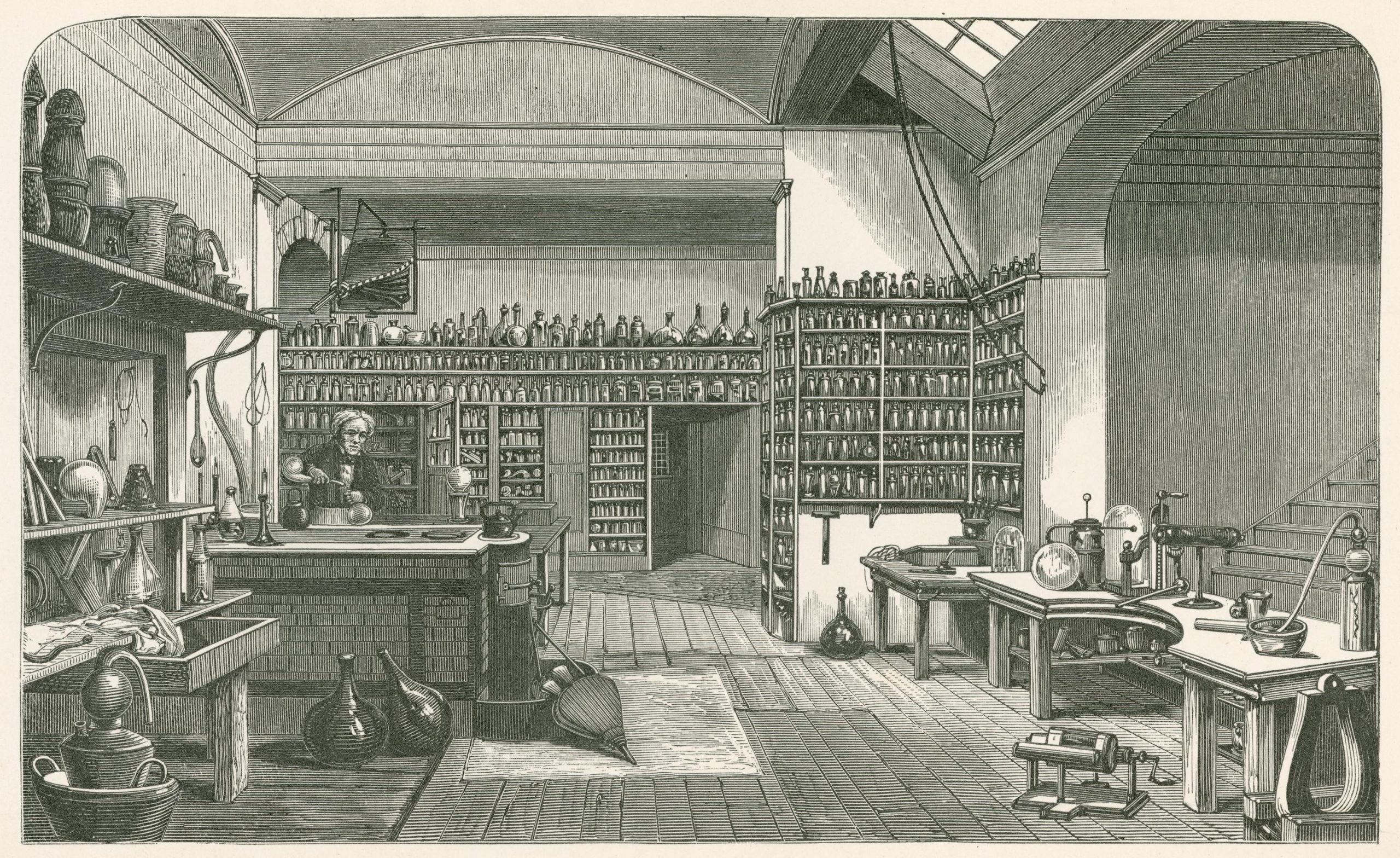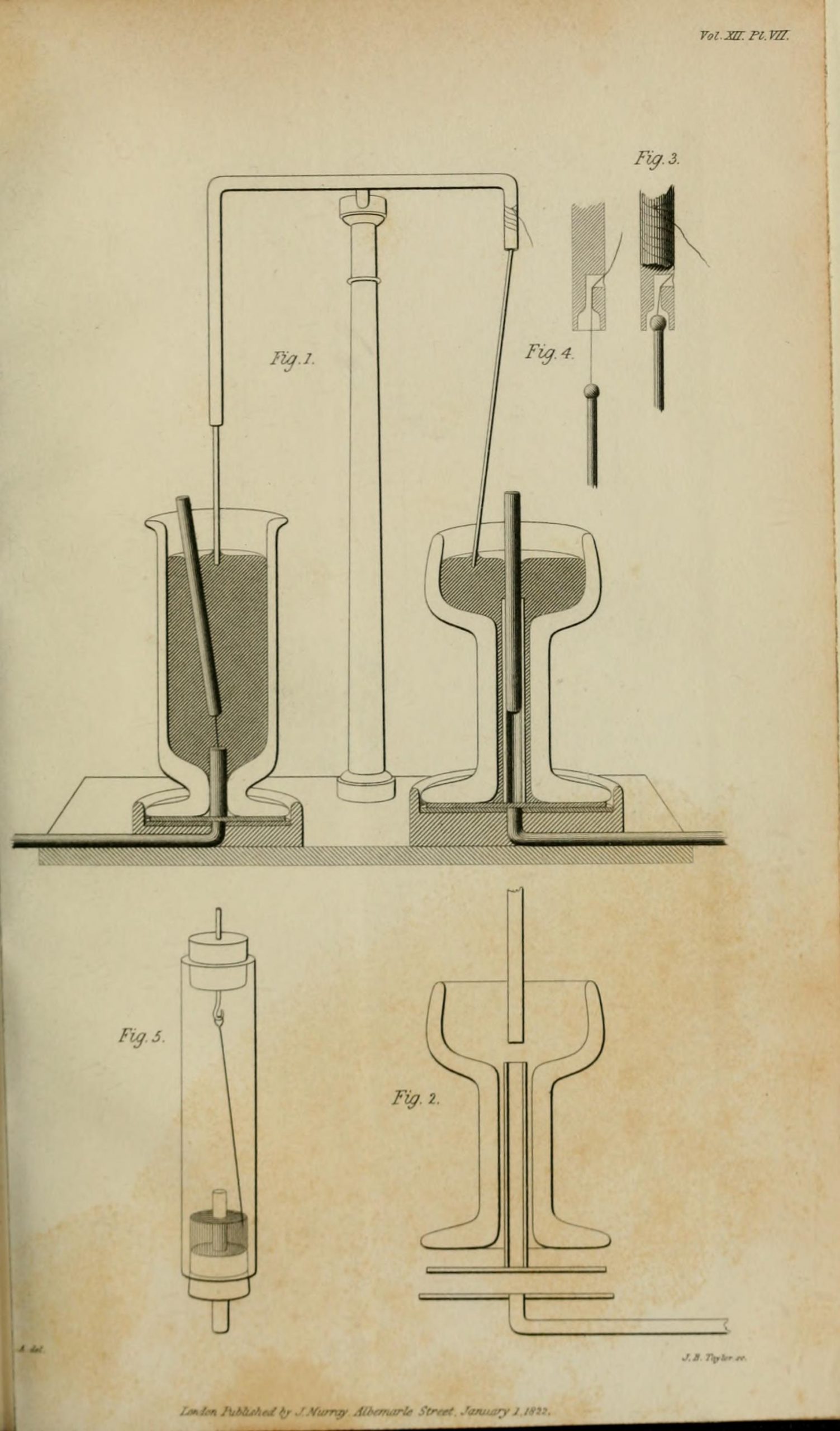The year 1821 was a good one for Michael Faraday (1791-1867). Having worked as an assistant at the Royal Institution in London for some years, he was appointed superintendent of the Institution’s house in May and married Sarah Barnard the following month. Then in September he made the first of many discoveries for which he would later become famous.
Faraday’s breakthrough arose in the wake of Hans Christian Ørsted’s announcement in 1820 that a wire carrying an electric current caused a magnetic compass needle to deflect. This was startling news to natural philosophers, who had assumed that electricity and magnetism were distinct phenomena.

Throughout Europe, researchers began investigating the strange effect. In France, André-Marie Ampère developed a mathematical analysis of what he called electrodynamics, while in England both Humphry Davy, Faraday’s boss at the Royal Institution, and William Hyde Wollaston began their own researches, as did many others.
In fact, by mid-1821, so much new work had been published about what came to be called electromagnetism that Richard Phillips, editor of the Annals of Philosophy, asked Faraday to review the copious literature and write a historical account. It was in doing this that Faraday made his great discovery.
Faraday always kept detailed notes of his work in the Royal Institution’s basement laboratory. These help us understand the very practical way he attacked problems, including those posed by Ørsted’s discovery.

It was on 3 September 1821 that Faraday made his big breakthrough. After repeating some of the experiments previously published and devising new ones as his thinking progressed, his notes record that he:
Arranged a magnet needle in a glass tube with mercury about it and by a cork, water, etc. supported a connecting wire so that the upper end should go into the silver cup and its mercury and the lower move in the channel of mercury round the pole of the needle. The battery arranged with the wire as before. In this way got the revolution of the wire round the pole of the magnet.
‘Very satisfactory’, he added modestly.
He had shown what no-one else had considered, that the motion produced by the interaction between an electric current and a magnetic field was circular rather than linear.
He continued working on the problem the following day, hoping to produce an apparatus that would illustrate what he called ‘electromagnetic rotations’.
The result was a device that rotated continuously without human intervention, thus successfully demonstrating the transformation of electrical energy into mechanical energy; in other words, the principle behind the electric motor.
Ingeniously, the kit he designed was portable and by November he was sending demonstration devices to other investigators.
To Faraday this was a great example of the advantages of a practical approach to solving scientific problems. Writing to Mary Somerville in 1833, he cited the 1821 discovery as evidence that his experimental method was far superior to the mathematical approach of Ampère and others.
Faraday quickly published his findings the following month and a description of the demonstration apparatus in January 1822. But this led to conflict when Davy accused him of plagiarism and of failing to credit Wollaston, who had been investigating rotary motions for some time.
Although Faraday largely cleared himself of the charge, the incident strained his relationship with Davy and Faraday didn’t greatly pursue this research area until after Davy’s death.

While Faraday’s discovery did not have an immediate practical application, it did prove to be a crucial step in the evolution of the electric motor, which bore fruit commercially by the end of the nineteenth century.
It also marked the beginning of a line of research that would bring Faraday enormous fame (including his appearance on Bank of England £20 notes between 1991 and 2000), particularly following his discovery of electromagnetic induction a decade later.
From small revolutions, it seems, great things would come.
